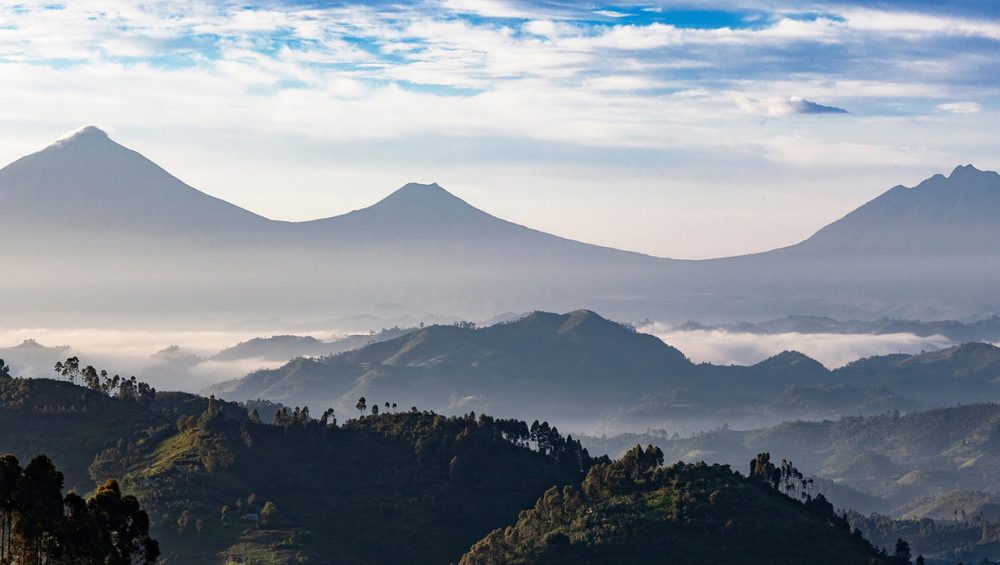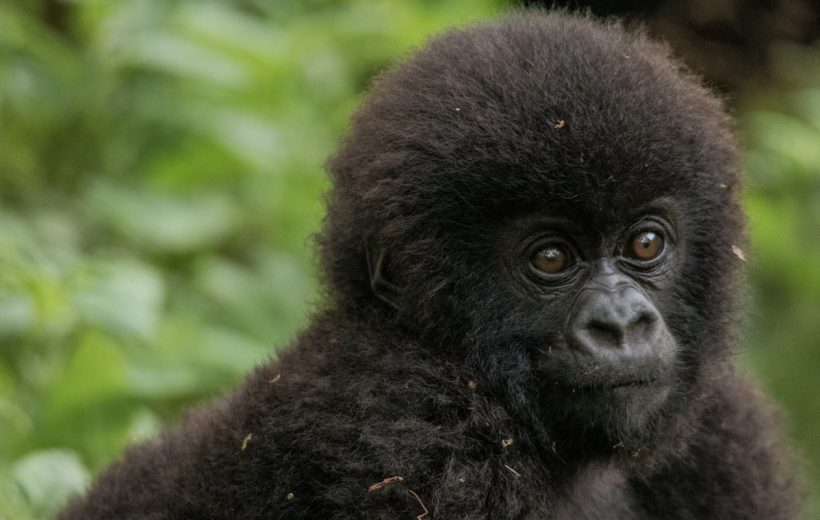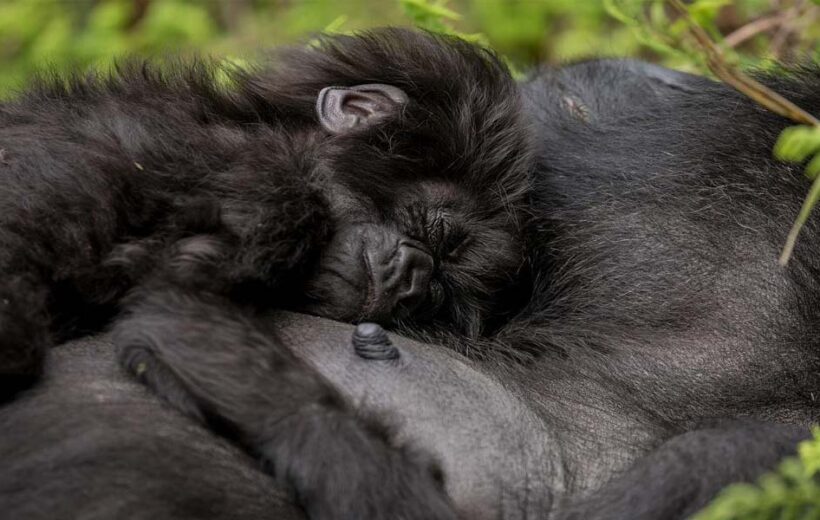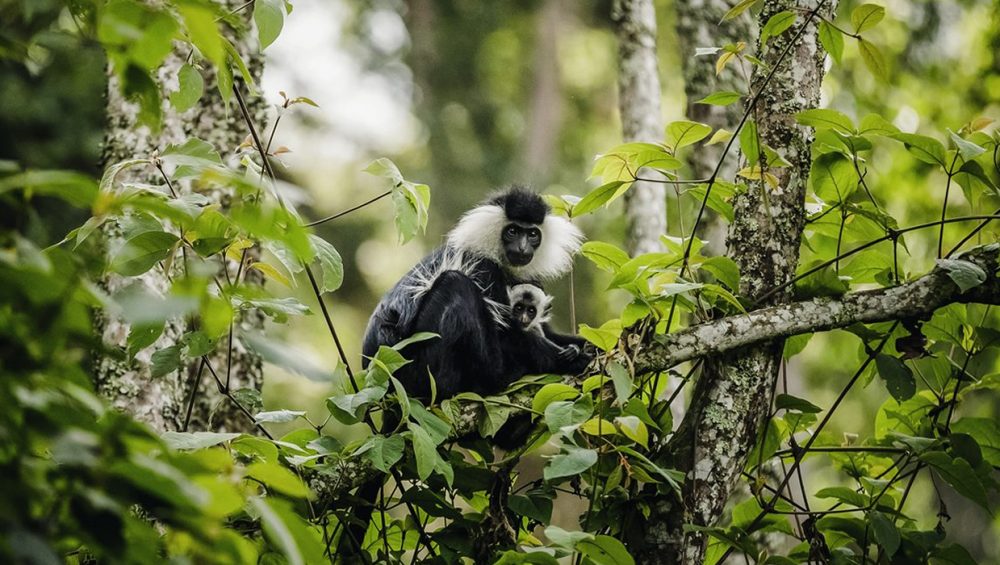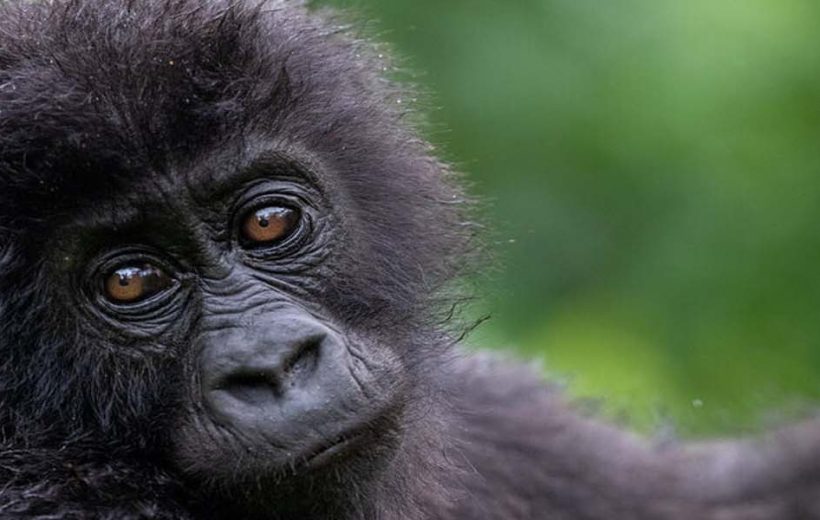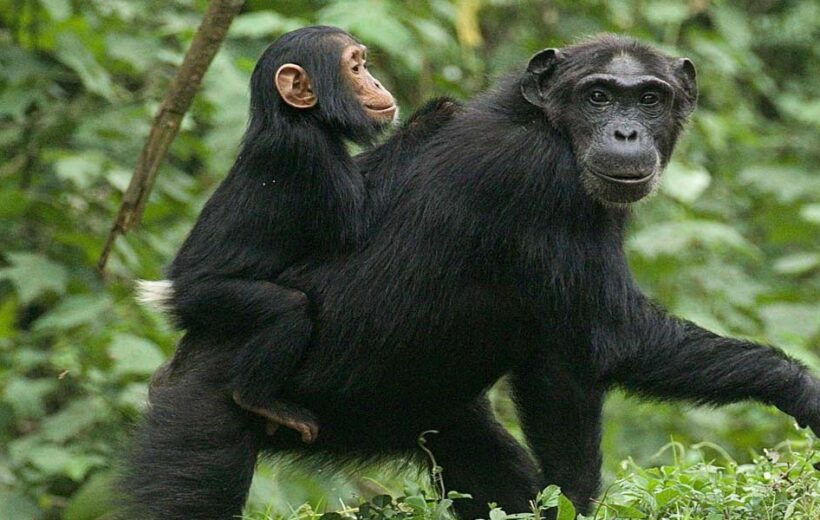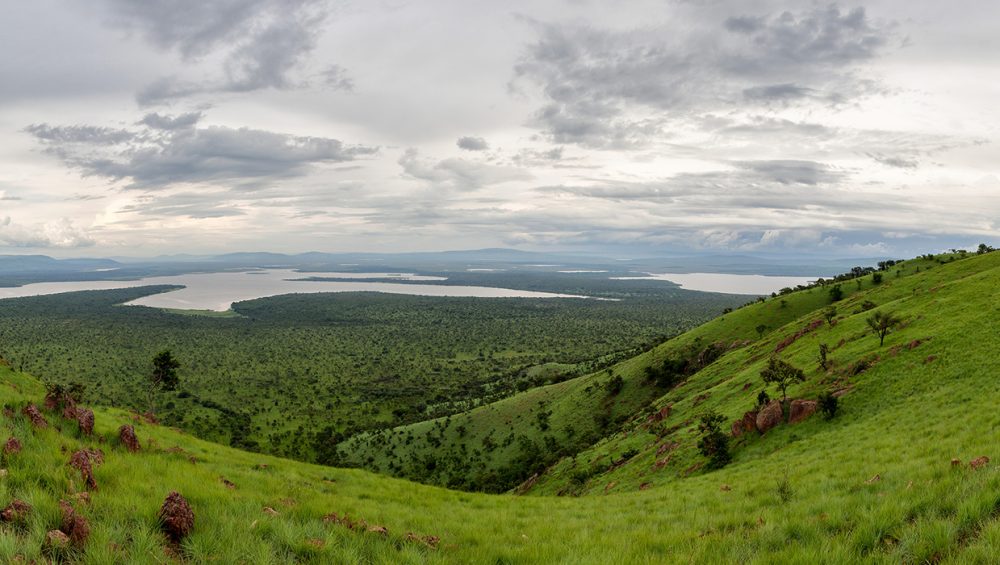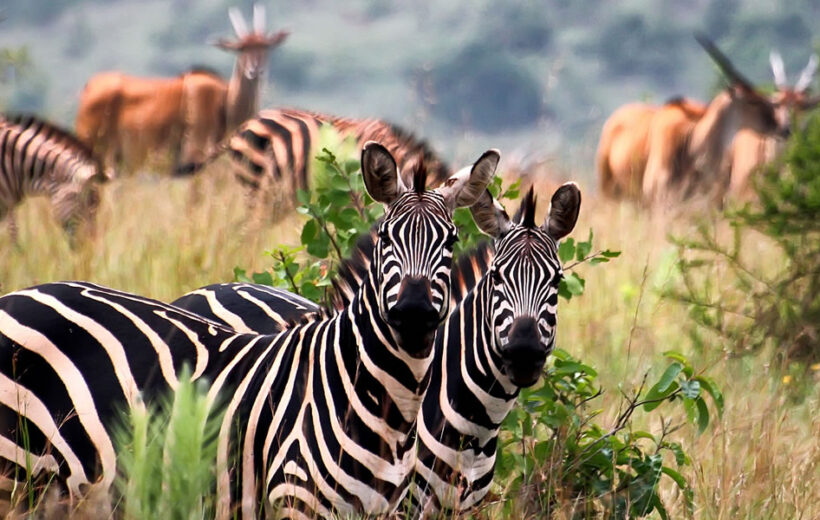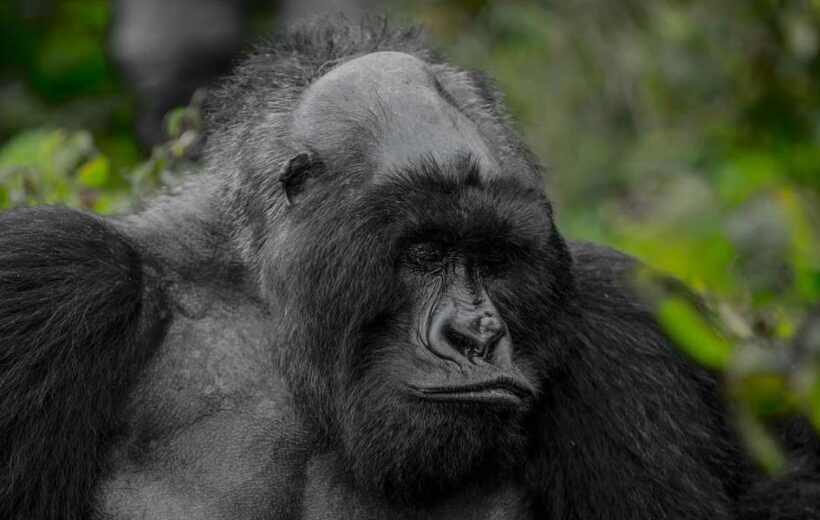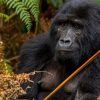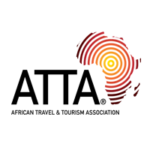Volcanoes National Park
Volcanoes National Park is located in northwestern Rwanda. It is home to the rare and endangered mountain gorillas. These on the entire planet can only be found in Uganda, Rwanda and the Democratic Republic of Congo and Volcanoes National Park is one of the best places to see them. Rwanda gorilla trekking tours make up most of Rwanda tours as wildlife enthusiasts hike the Misty mountains to meet the giant apes.
Volcanoes National Park is about a 3-hour drive from Kigali, Rwanda’s capital city and it is the most visited national park in Rwanda.
It covers a land area of 160 square kilometers but the Rwandan government embarked on a program to expand the park by more than 37.4 square kilometers. This expansion is primarily aimed at wildlife conservation by increasing the land area and habitat for the wildlife species. Volcanoes National Parks expansion will boost Rwanda Gorilla trekking safaris and other wildlife adventures in the park.
Discover Your Getaway!
Start Trip Booking Process
Get In Touch with our travel consultants to start crafting for you a tailor-made African holiday package.
+(256) 785-179-586
Discovery Journeys To Volcanoes National Park
Virunga Mountains
The park is part of the great Virunga massif a stretch of Volcanic mountains along the Rwanda, Uganda, and Democratic Republic of Congo borders. Volcanoes National Park has 5 of the eight Virunga volcanic mountains. It shares these with Uganda and Rwanda respectively. They include Mount Karisimbi, the highest of all at 4,507 meters above sea level and it is situated at the Rwanda DRC border.
Mount Muhabura is the third highest at 4,127 meters above sea level and it lies at the Rwanda-Uganda border. Mount Bisoke has a crater lake at its summit and stands at an elevation of 3,711 meters above sea level. It is also shared between Rwanda and the Democratic Republic of Congo.
Mount Sabyinyo is shared by the 3 countries and has an elevation of 3,674 meters above sea level. Mount Gahinga is the last of the Virunga massif in Volcanoes National Park. It has an elevation of 3,474 and lies along the Rwanda-Uganda border.
It is in the above mountains where you find mountain gorillas, golden monkeys, and many other wildlife species. Mountain gorillas live in the forested mountains hence their name mountain gorillas.
Wildlife In Volcanoes National Park
Mountain Gorillas
Mountain gorillas are the highlight and most sought-after wildlife species in Volcanoes National Park. The total mountain gorilla population on the planet is estimated at 1100 with the Virunga massif having about 600 of them with the rest living in Bwindi Impenetrable National Park. Of the 600, Volcanoes National Park has half of them, and the others are shared between Virunga National Park and Mgahinga gorilla parks in DRC and Uganda respectively. They live in families ranging up to 20 individuals or more. Each family is led by a dominant male gorilla called Silver Back.
There are 20 gorillas families in the park with 12 fully habituated and open for tourism. Eight are under habituation and will also be open for tourism with time. The 12 habituated families include Agashya, Pablo, Susa, Igishya, Kwitonda, Sabyinyo, Amahoro, Umubano, Ntambara, Hirwa, Muhoza and Titus.
Some of these can be reached after a short time of hiking while others are strenuous. Depending on your physical fitness and health condition you can talk to the park rangers to allocate you a gorilla family that can be got to after a short time of hiking. Book your Rwanda gorilla tour now and hike to meet any of these habituated families.
Golden Monkeys
Golden monkeys are other primates that live in the forested mountains of the park. Just like their name, golden monkeys are covered with golden fur and also live in families of up to 20 individuals. These, unlike mountain gorillas, live in the light bamboo forests and lower slopes of the mountains.
The golden monkey Diet is mainly of bamboo shoots and some edible plants and leaves. Catching up with them is also very impressive.
Other Wildlife Species
Volcanoes National Park is home to forest elephants though these are rarely seen. Some have been spotted at Singita Kwitonda Lodge as they freely roam the park’s ecosystem. Other wildlife in the park include forest buffaloes, forest hogs, and over 200 bird species including endemics of the Albertine Rift Valley.
Activities in Volcanoes National Park
Mountain gorilla trekking is a commonly done activity in Volcanoes National Park. Here people hike seeking to find the mountain gorillas. This starts at the park headquarters at 7:00 a.m. with a briefing after which tourists are guided to the park. You then hike for 2 to 4 hours or more following the mountain gorillas.
Once you get to them, you are allowed to be in their presence for an hour taking photos and getting to know more about them. After 1 hour you are then brought back to the park where you are awarded your certificates of participation.
We customize all our Rwanda gorilla trekking safari adventures to ensure you get the best of your great apes expedition.
Golden monkey trekking is also among the activities in the park. Since golden monkeys inhabit the lower slopes of the light bamboo forests, it is very easy to get to them.
The Golden Monkey Trek also starts with a briefing at the park headquarters. From here you are led to the park where you see the golden monkeys and other wildlife species.
Mountain Hiking
For mountain hikers, Mountain climbing in Volcanoes National Park is very enjoyable. Two major mountains in the park can be hiked with mount Bisoke doable in a day. It takes around 7 to 8 hours to complete ascending and descending the mountain. While on the hike you get to see a number of wildlife in the park, especially birds, and also enjoy the views of other Virunga mountains. The crater lake on the summit of Mount Bisoke is the most impressive and iconic attraction.
Mount Karisimbi can also be hiked though it takes 2 days to complete this expedition. Here you spend one night in the mountains and get to experience real life in the jungle.
Birding
Birding safaris can be done alongside all the above-mentioned main activities. You can also visit the Musanze caves or go for community visits where you get to know more about the people’s ways of life.
Accommodation
The park has a wide range of accommodation options ranging from budget to high-end options. East Africa’s most luxurious safari lodges are here and they complement the primate safari experiences, especially gorilla trekking. High-end lodges near the park include Virunga Lodge, Bisate Lodge, One and Only Gorilla’s Nest Lodge, Sabyinyo Silverback Lodge, and Kwitonda Lodge among others.
For those who prefer mid-luxury lodges, Five Volcanoes Hotel, Mountain Gorilla View Lodge, Ingagi Parkview Lodge, and Bishops House can be the best options. There are also budget and mid-range lodges including Da Vinci Lodge, Gorilla Solution Lodge, and Muhabura Hotel among others.
All of the above-mentioned lodges are situated a few minute’s drive from the park headquarters. The only exception is Virunga Lodge which is located about 45 minutes drive from the park headquarters.
Getting to Volcanoes National Park
You can access the park by both road and air transport. By Road from Kigali, it is just a 3 hours drive. From Nyungwe National Park it is about a 5 to 6-hour drive. From Uganda depending on where you are coming from, from the southern sector of Bwindi Impenetrable National Park it can take about 2 hours. There is an airstrip in Musanze near the park and a helipad at One and only Gorilla’s Nest Lodge for those who would prefer to fly to the park.
Best time to Visit
You can visit the park any time of the year however best experiences can be enjoyed in the dry season. This is from June to September and from December to Early March. In the dry season rainfall is minimal which makes hiking and navigating through the park a bit easy. In the wet season, you can still enjoy gorilla trekking and other park activities though rainfall can occur at any time. We usually recommend having rain gear like a poncho and wearing waterproof pants even in the dry season. This is because the trails are usually wet in the morning from dew. Be sure to book your Rwanda gorilla tour in advance as gorilla permits quickly sell out.

